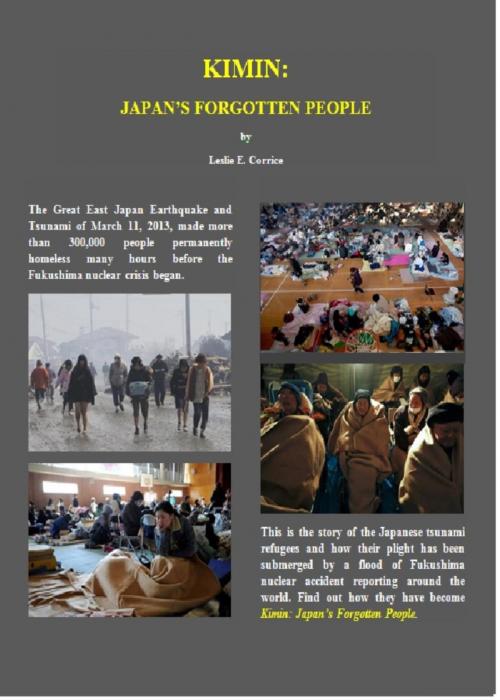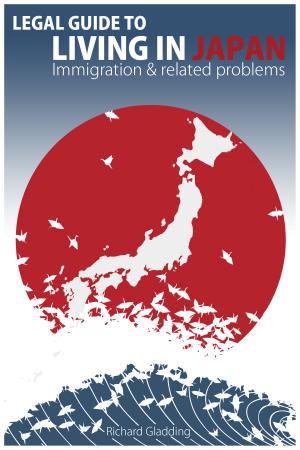| Author: | Leslie E. Corrice | ISBN: | 9780985769932 |
| Publisher: | The Hiroshima Syndrome | Publication: | October 1, 2013 |
| Imprint: | Language: | English |
| Author: | Leslie E. Corrice |
| ISBN: | 9780985769932 |
| Publisher: | The Hiroshima Syndrome |
| Publication: | October 1, 2013 |
| Imprint: | |
| Language: | English |
This is the dark, depressing story of Japan's 300,000 tsunami refugees. On March 11, 2011, a massive earthquake struck Japan’s main island, Honshu. The temblor’s impact was devastating - destroying or damaging nearly 1,000,000 buildings and homes - but the resulting tsunami was much worse. A tremendous surge of black water pounded the northeast coast, devastating more than 400 kilometers of the shoreline. Nearly 500,000 people chaotically evacuated the coastline. More than 20,000 died. Over 300,000 residents lost everything – their homes and all belongings – swept away by the raging torrent. The government was shocked and frustrated because a tsunami of this magnitude was considered too unlikely to be protected against. Of the Tohoku region's 300 anti-tsunami barriers struck by the series of waves, 200 utterly failed – a fact publicly presented here for the first time. The plight of the tsunami refugees was the top news story in the world until the wee hours of March 12, when the nuclear accident at Fukushima Daiichi began. Within a week, news of the tsunami's aftermath, and the condition of the refugees, had vanished from the popular Press It had been supplanted by the evolving nuclear crisis at Fukushima Daiichi. For two years following 3/11/11, the international Press has regularly reminded the world of the plight of Fukushima’s evacuees, but virtually nothing was reported concerning the dire situation with the tsunami refugees. The tsunami victims are people who will never go home because their homes are gone. These are people who receive little or no compensation to help pull them out of their misery. More than half of the refuges could not get tsunami insurance because they lived behind tsunami barriers that met national protective standards. Those who qualified for coverage can only recoup half of their property value. Their suffering has cried out for succor, but little has come their way. This is the story of how the worst natural disaster in the history of Japan became buried beneath a virtual tsunami of popular Press exploiting apocalyptic nuclear accident scenarios and radiation fears. Kimin follows the chain of events in Tokyo that caused the world’s Press to focus entirely on the Fukushima accident at the expense of those who suffered the far-more horrific aftermath of the tsunami. The narrative also covers the terrible conditions in the cities and towns crushed by the giant waves, two years after the torrent had subsided. Finally, Kimin asks the question “Since when are 20,000 deaths and 300,000 permanently homeless people less newsworthy than the hypothetical risks posed by a nuclear accident?” While the situation with the Fukushima accident is worthy of Press coverage, the condition of the tsunami refugees is at least of equal attention. Sadly, this has not been the case. Although their national Press posts occasional articles about the very, very few who have gained some semblance of recovery, most of Japan’s tsunami refugees continue to wallow in misery. This is why the tsunami refugees call themselves Kimin: Japan’s Forgotten People.
This is the dark, depressing story of Japan's 300,000 tsunami refugees. On March 11, 2011, a massive earthquake struck Japan’s main island, Honshu. The temblor’s impact was devastating - destroying or damaging nearly 1,000,000 buildings and homes - but the resulting tsunami was much worse. A tremendous surge of black water pounded the northeast coast, devastating more than 400 kilometers of the shoreline. Nearly 500,000 people chaotically evacuated the coastline. More than 20,000 died. Over 300,000 residents lost everything – their homes and all belongings – swept away by the raging torrent. The government was shocked and frustrated because a tsunami of this magnitude was considered too unlikely to be protected against. Of the Tohoku region's 300 anti-tsunami barriers struck by the series of waves, 200 utterly failed – a fact publicly presented here for the first time. The plight of the tsunami refugees was the top news story in the world until the wee hours of March 12, when the nuclear accident at Fukushima Daiichi began. Within a week, news of the tsunami's aftermath, and the condition of the refugees, had vanished from the popular Press It had been supplanted by the evolving nuclear crisis at Fukushima Daiichi. For two years following 3/11/11, the international Press has regularly reminded the world of the plight of Fukushima’s evacuees, but virtually nothing was reported concerning the dire situation with the tsunami refugees. The tsunami victims are people who will never go home because their homes are gone. These are people who receive little or no compensation to help pull them out of their misery. More than half of the refuges could not get tsunami insurance because they lived behind tsunami barriers that met national protective standards. Those who qualified for coverage can only recoup half of their property value. Their suffering has cried out for succor, but little has come their way. This is the story of how the worst natural disaster in the history of Japan became buried beneath a virtual tsunami of popular Press exploiting apocalyptic nuclear accident scenarios and radiation fears. Kimin follows the chain of events in Tokyo that caused the world’s Press to focus entirely on the Fukushima accident at the expense of those who suffered the far-more horrific aftermath of the tsunami. The narrative also covers the terrible conditions in the cities and towns crushed by the giant waves, two years after the torrent had subsided. Finally, Kimin asks the question “Since when are 20,000 deaths and 300,000 permanently homeless people less newsworthy than the hypothetical risks posed by a nuclear accident?” While the situation with the Fukushima accident is worthy of Press coverage, the condition of the tsunami refugees is at least of equal attention. Sadly, this has not been the case. Although their national Press posts occasional articles about the very, very few who have gained some semblance of recovery, most of Japan’s tsunami refugees continue to wallow in misery. This is why the tsunami refugees call themselves Kimin: Japan’s Forgotten People.















